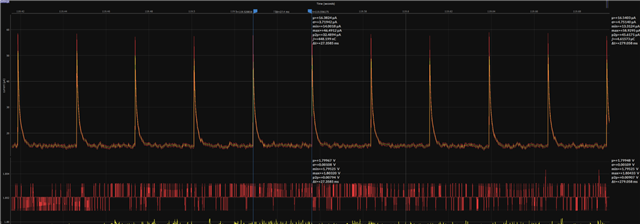Hi,
We are troubleshooting high power consumption on a custom nRF52832 board. It has taken us down to just
1. Enable RTC,
2. Setup GPIOs,
3. With and without NRF_POWER->DCDCEN |= 1;
3. Go into a sleep loop (while(1) { __WFE(); __SEV(); __WFE(); }
Confirming the power consumption on a PCA10040 still keeps us in high 15 uA, with peaks up to 60 uA at ~40 Hz.

Also, not enabling the RTC and leaving all GPIOs in default states leaves us with these weird-looking spikes.
Running the same code on a custom nRF52811 leaves at a low 3-4 uA current consumption which is very expected.

We are testing with the current measurement probes on a DK10040, and are using SDK15.30 with armgcc.
int main(void)
{
NRF_POWER->DCDCEN |= 1;
while (1)
{
__WFE();
__SEV();
__WFE();
}
}
Thanks
Johan



